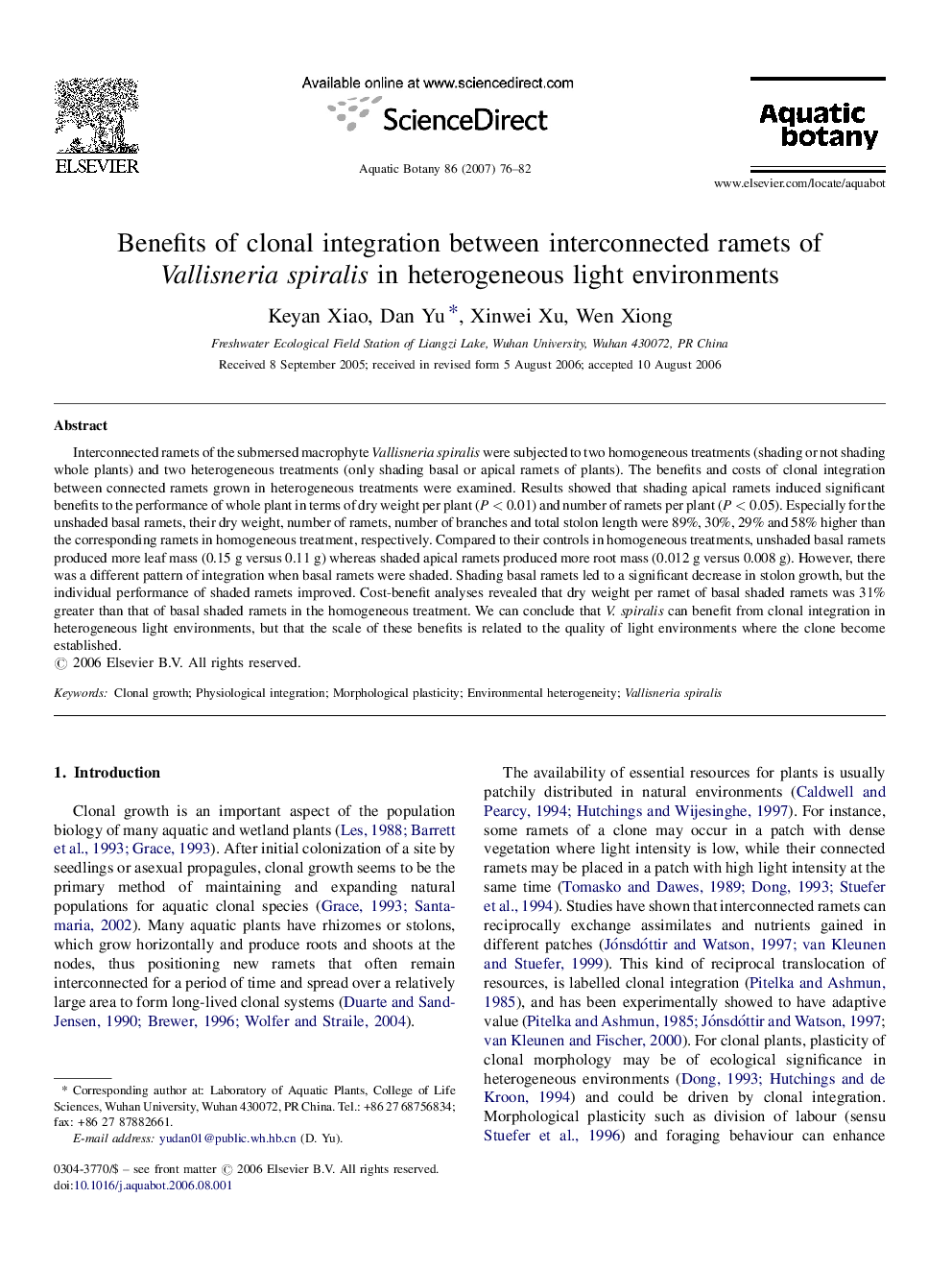| Article ID | Journal | Published Year | Pages | File Type |
|---|---|---|---|---|
| 4528483 | Aquatic Botany | 2007 | 7 Pages |
Interconnected ramets of the submersed macrophyte Vallisneria spiralis were subjected to two homogeneous treatments (shading or not shading whole plants) and two heterogeneous treatments (only shading basal or apical ramets of plants). The benefits and costs of clonal integration between connected ramets grown in heterogeneous treatments were examined. Results showed that shading apical ramets induced significant benefits to the performance of whole plant in terms of dry weight per plant (P < 0.01) and number of ramets per plant (P < 0.05). Especially for the unshaded basal ramets, their dry weight, number of ramets, number of branches and total stolon length were 89%, 30%, 29% and 58% higher than the corresponding ramets in homogeneous treatment, respectively. Compared to their controls in homogeneous treatments, unshaded basal ramets produced more leaf mass (0.15 g versus 0.11 g) whereas shaded apical ramets produced more root mass (0.012 g versus 0.008 g). However, there was a different pattern of integration when basal ramets were shaded. Shading basal ramets led to a significant decrease in stolon growth, but the individual performance of shaded ramets improved. Cost-benefit analyses revealed that dry weight per ramet of basal shaded ramets was 31% greater than that of basal shaded ramets in the homogeneous treatment. We can conclude that V. spiralis can benefit from clonal integration in heterogeneous light environments, but that the scale of these benefits is related to the quality of light environments where the clone become established.
